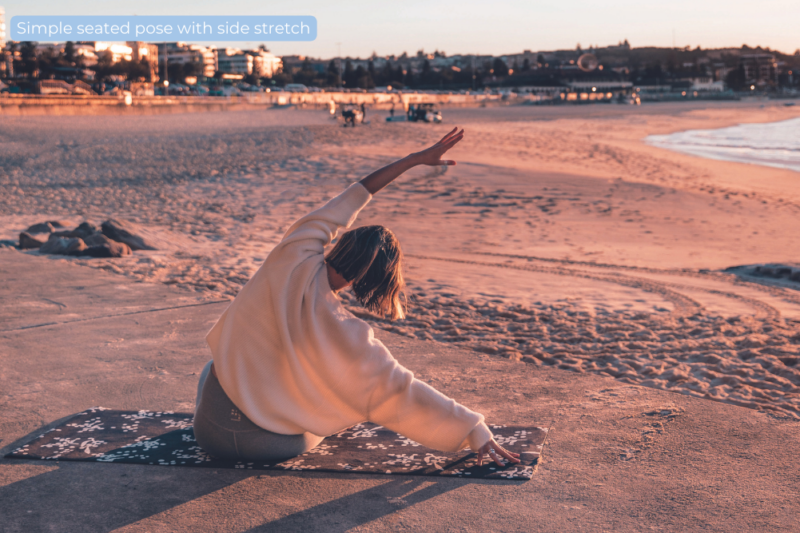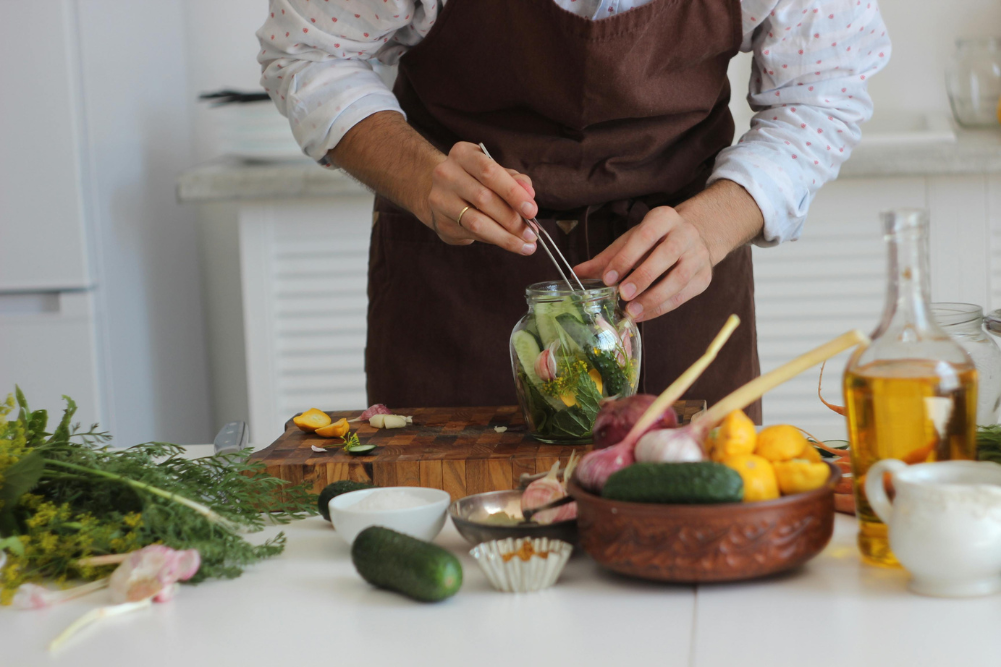Healing Through Yoga: How Mindful Movement Eases Grief
Grief can cause physical sensations such as a tight chest, aches and pains and headaches, driving sufferers to turn to treatments like counselling, support groups, self-care and medication to help navigate the rollercoaster of emotions.
According to the Australian Psychological Society, some psychologists may recommend yoga and other mindfulness-based practices as part of a holistic approach to managing grief. Research has found that practices such as meditation, yoga and tai chi may be useful in helping people to manage the intense emotions that often accompany grief.
Alongside self-care activities such as exercise, meditation and journaling, research suggests yoga can help shift the heavy energy of grief and begin the process of healing. A study published in Evidence-Based Complementary and Alternative Medicine found that yoga intervention programs helped participants with grief-related symptoms such as excessive thinking and being easily overwhelmed by their emotions.
“An hour on the mat helped me shift my attention to my breathing and the sensations of my body,” says Sally Douglas, co-host of Aussie podcast Good Mourning, a resource that aims to tackle the taboo around talking about grief. Douglas says that yoga became a big coping mechanism for her after losing her mum suddenly.
“The loss was unexpected and traumatic,” she explains, “and the practice of being in my body, finding stillness and feeling grounded helped me to gain a sense of trust and calm. It enabled me to witness the connection between my emotions and body and I found over time this helped with emotional regulation.”
“Practising yoga in a group setting can offer a sense of community and support,” adds yoga teacher Dora Nikols. “This can be especially important for individuals who are grieving and feeling isolated.”
Grieving the loss of a loved one can be one of the most challenging experiences we face. It is a process that can be both emotional and physical, and it can take time to heal. Many people find that practising yoga can be a helpful tool in this process as the movement can help to shift emotions and support the process of grieving.
Douglas says the stress response to coping with a loss can lead to tension being held in the body and can cause lots of physical responses like tension headaches, insomnia, digestive issues, brain fog and anxiety.
“Yoga, or any form of physical activity, helps to stimulate the production of endorphins,” she explains, “which are natural mood enhancers that we so need when we are struggling with a loss. On top of this, physical movement can be a welcome distraction from the pain and sadness of grief, while also helping to improve relaxation and sleep quality.”
Yoga also offers a safe and supportive space to process emotions. Have you ever found yourself feeling unexpectedly emotional or even crying in the middle of a yoga class? It’s not uncommon to experience a release of emotions while practising yoga.
The practice of yoga encourages us to be present with whatever is arising in the moment, whether it is physical sensations, emotions or thoughts and it can help with letting go. By learning to stay present with our experience, we can begin to develop a greater sense of self-awareness and self-compassion.
“When we lose a loved one, it is common to experience feelings of sadness, anger and even guilt,” says Douglas, who believes yoga can be a helpful tool for processing and releasing emotions from the body.
In addition to the physical practice of yoga, meditation and pranayama (breathing) techniques can also be helpful in supporting the grieving process. Meditation allows us to observe our thoughts and emotions without judgement, which can help to create a sense of spaciousness and perspective. Pranayama techniques, such as deep breathing and alternate nostril breathing, can help to regulate the nervous system and calm the mind.
Grieving can take time, and it can be unpredictable — there is no one-size-fits-all solution. The emotions and thoughts that come with grief can be overwhelming and may leave you feeling disconnected from the world around you. However, with time, patience and the right support, it is possible to heal and move forward.
Yoga offers a holistic approach to healing that can help connect the mind, body and spirit. It offers an opportunity to connect with ourselves in a way that is not always accessible through traditional talk therapies. The physical practice of yoga, combined with the breathwork and meditation, can help release tension, process emotions and promote relaxation.
Ultimately, the practice of yoga can be a powerful tool in supporting the process of grieving. By creating a safe and supportive space to process emotions, yoga can help to promote healing and a greater sense of peace during a challenging time. If you are grieving the loss of a loved one, consider exploring yoga as a way to support your journey towards healing and acceptance. Listen to your body and your emotions and seek help if needed.
Yoga poses to support grief
Child’s pose (Balasana)

Child’s pose is a great pose to start with as it can provide a sense of comfort and grounding. Start by kneeling on the floor and sitting back on your heels. Reach your arms out in front of you and rest your forehead on the ground. Take a few deep breaths and allow yourself to sink into the pose. You can stay in this pose for as long as you like, breathing deeply and allowing yourself to feel whatever emotions arise.
Extended puppy pose (Uttana shishosana)

This pose can help release tension in the shoulders and neck, which can become tight when we are grieving. Start by coming onto your hands and knees. Walk your hands forward and lower your chest towards the ground. Keep your hips over your knees and your arms extended. You can rest your forehead on the ground or a block. Take a few deep breaths and feel the stretch in your spine and shoulders.
Tree pose (Vrikshasana)
This is another great pose to help with balance and focus. It can provide a sense of stability and strength during a difficult time. Stand with your feet hip-width apart and root down through your right foot. Lift your left foot and place it on your right thigh. If you can’t place your foot on your thigh, you can place it on your calf or ankle. Bring your hands to your heart and find a focal point to gaze at. Take a few deep breaths and feel the stability in your body. You can also bring movement in here by lifting one arm overhead and stretching through your side body.
Simple seated pose with side stretch

Bringing some gentle movement into this pose can help to release any tension in your sides and back. Raise one arm up towards the ceiling, reaching through your fingertips. As you inhale, lengthen through your spine, and as you exhale, gently lean over to the side. Continue reaching through your right fingertips and stretching through the side of your body. Take a few deep breaths in this position, then inhale to come back to centre. Repeat on the other side.
Simple seated pose (Sukhasana)

When we sit in a comfortable and grounded position, it can help to create a sense of stability and calmness in the body, which can be particularly helpful when experiencing intense emotions. Find a comfortable seat with your hands resting on your knees or thighs. Lengthen your spine and draw your shoulder blades down and back. Close your eyes or soften your gaze and take a few deep breaths, inhaling through your nose and exhaling through your mouth. With each inhale, imagine lengthening through your spine, and with each exhale, imagine relaxing your shoulders and any tension in your body. Stay in this pose for a few minutes, continuing to focus on your breath and allowing your body and mind to relax.
Simple pranayama
Find a comfortable seated position. Bring one hand to your chest and one to your belly. Close your eyes and take a few deep, slow breaths through your nose, focusing on lengthening your inhales and exhales. Begin to inhale deeply through your nose, filling your belly with air, and exhale through your nose, allowing your belly to deflate. If it feels natural, you can also incorporate a visualisation into your practice. As you inhale, imagine white healing light entering your body and filling you with peace and calm. As you exhale, imagine any negative emotions or energy leaving your body with your breath. When you’re ready to finish your practice, take a few more deep breaths and slowly open your eyes.
This gentle pranayama practice can be a soothing way to calm your mind, regulate your nervous system, and invite feelings of relaxation and peace. By paying attention to your breath and using visualisation, you may find it easier to let go of difficult emotions and cultivate a greater sense of ease as you move through the grieving process.
Things to remember
- It’s important to take care of yourself when exercising, especially during the grieving process. Your body and emotions may be vulnerable, so be kind and gentle with yourself. Make sure to pay attention to your energy levels and take breaks when needed. It’s OK to take it easy and not push yourself too hard.
- Before starting any exercise, including yoga, make sure to properly warm up and pay attention to your form to prevent injury. Grief can affect your focus and increase the risk of injury, so it’s important to be mindful and present during your practice.
- While exercise can be helpful for managing emotions, it’s important to be aware that it can also bring up painful memories or emotions. It’s OK to feel what you need to feel, and if you need support, don’t hesitate to reach out to a trusted friend or professional.
- Remember that exercise should be a healthy coping mechanism, not an unhealthy obsession. If you notice that exercise is becoming too compulsive or obsessive, it’s important to seek help and find other healthy ways to cope with grief.
London-born Laura Kelly is a content creator and yoga teacher who lives in Sydney. Instagram: @laurakelly_yoga.








